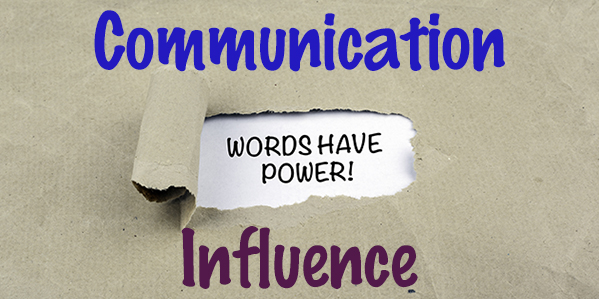
Dr. Relly Nadler: This week we are going to talk about the competency, communication. George Bernard Shaw has said, “The single biggest problem in communication is the illusion that it’s taken place.”
We are going to get into the nuts and bolts about communication, answering some of the questions: What are some of the best ways to engage your audience? How can leaders communicate in a way that is inspiring to their followers? How leaders fine-tune their delivery. What’s the best way for a leader to persuade others? What are the pitfalls of poor communication?
The answers to these questions in communication and we are also going to look at influence and influence strategies. We are going to interview John Davies, who is the founder of Davies Public Relations. It’s one of the most successful, strategic communication firms in California. The company has won over 250 awards for excellence in advertising, design, and communications, and is the 3rd largest public relations firm in the state.
For over 20 years, Davies ran numerous political campaigns and had an 85% win ratio. His focus has always been on studying human behavior and effective communication strategies to influence decision making, no matter what venue. John is also a top speaker and a communications strategist.
His seminars and coaching have consistently received high ratings from audiences all over the world.
What is communication and why is it important? It includes listening with an open mind, sending convincing and clear messages and cultivating an empathic give and take. The speaker read emotional queues expressed by the listener and then can meet the listener by fine tuning the message. For communication to be effective the message as to be received with the intent intact, just as the sender has planned.
I think often there is a gap between the intention and the interpretation. Difficult situations and delivering bad news are not easy, but star performers seem to have a way to deal with that in a direct and significant way.
Some of the research that we know is that one of the biggest complaints from American’s in the job force is poor communication with managers. Over two-thirds of those interviewed believe the problem actually prevents them from doing their work.
In another study of 30 executives and managers, shows that people prefer working to and relating with others who know how to successfully handle communication and communicate their emotions in their requests.
What makes a good communicator? From some of Daniel Goleman’s work there are five basic skills that determine if a person is an effective communicator:
- Listening skills such as asking good questions.
- Being open minded.
- Understanding the other.
- Not interrupting.
- Asking for suggestions.
Where are you? Are you average or are you a star? From some of the databases from the Hay Group over 30 years, of what makes a star performer, the average performer in regards to communication engages the audience and they clarify the message. But the star, in addition to that, has an effective give and take and then they fine-tune delivery.
One of the sisters of communication is influence. We’ll get John’s take on communicating with influence. If you look at what is the average performer’s influence, they are concerned with the image of their report or how they are presenting and they use facts and reasons to persuade. A star does each of those, anticipating the impact and actions of their words.
What are the obstacles? How am I going to deal with that?
Then they use something that is called indirect influence. Some of the lobbying aspects are indirect influence. The individual leader uses direct influence with anybody else that they use; other people, other sources, white papers, research, best practices of other companies—are indirect influence.
Then the star uses a complex influence of strategy where they try and pull that all together.
If you think about communication and also influence, it’s important to all of us, but it’s challenging. Here are a couple of key things to think about:
- You are always communicating even if you are not saying anything.
- Everything you say counts.
- There are no second attempts, editing, or deleting.
- When the words leave your mouth, you have no control how they are going to be interpreted.
- Listeners are constantly constructing or story making. That means they are always interpreting what you are saying.
- Your words are transformed and organized to fit into the listener’s personal story or preconceived idea of what you and/or their similar situations.
- There will be more than one story and everybody that you speak to will create their own story.
- It’s the story that’s created from your communication that determines the meaning, not what you say.
- In the end, it’s the story, not what you say, which will be remembered, passed on and communicated to others.
If you take all of these into consideration, and I like to say this to executives or organizations that I deal with, what’s the most likely outcome of your communication? Well, you are going to be misunderstood, or misinterpreted.
If you think of the bottom line, what’s the most likely outcome: You’ll be misunderstood or misinterpreted. If you had that as your intention, therefore you would probably be more clear, deliberate and focused on communication.
John, welcome to the show.
John Davies: Hi Relly, great to be on with you.
Dr. Relly Nadler: Glad to have you here and happy that you can make some time for us. Give us a little bit of your background and how you got into the communications field and maybe some of the work you do with Davies.
John Davies: How I got started in the communications field is related to your beginning. You probably understand it better than most. I was born into a family where both of my parents had been married previously and brought in two kids from each of their previous marriages. Unusual in the 1950s.
You learn how to communicate really well with different groups of people when you have to live in that type of environment, just to get the meal passed around the table. With six kids at the table from two different groups. A whole bunch of times I think about how I had to influence my brothers and sisters that were older and also the one that was younger.
Dr. Relly Nadler: Yes, with just having that many – the group dynamics every single day had to be rough.
John Davies: Totally. The other thing that was interesting that I think really helped me is that I had a horrible speech impediment as a child. About fourth grade, they figured out that I needed to go to a speech therapist. I think the grocery clerks and people around town could have told them earlier that I had the issue because I couldn’t pronounce anything when I went there.
I think when you don’t speak and you can’t speak well, you have to listen and you have to watch how people behave. You see things in a different way than the person that is talking a lot.
Dr. Relly Nadler: So just from that experience you had a whole different awareness. What were some of the learnings that you got from that early experience? That is unusual.
John Davies: From a classroom, watching the kids that were really good in getting the teacher’s attention. Watching the popular kids. Watching what was going on. Watching the unpopular kid that tried so hard that bumped up against everything and was really rough. Having the absolute panic of when I was going to be called on, not because I may not know the answer, but because I knew I couldn’t communicate it.
The deal was it wasn’t what was in my brain, it was my ability to get it out. As you grow and you have that problem, you never want to have that problem again. It’s a bad dream.
Dr. Relly Nadler: How did you get over it?
John Davies: Luckily, a good counselor at my school in fourth grade ensured my parents got me off to a speech therapist that I went to a couple of days a week for probably 2-3 years. I was able to get over that. According to my parents and my brothers and sisters, I have never stopped talking since then.
Dr. Relly Nadler: You coined this term, “perceptioneering.” I know you had that as one of the markers for your company, not sure if you still do. What is “perceptioneering” and how does that relate to your work?
John Davies: Well, it was monikered just before to say what we did. But in a lot of ways it’s the perception it’s only times is more important than the reality in quick impressions. So much of our life today with the pace we live, that getting someone’s attention quickly is one of the key goals.
The perception people have is sometimes more important than what the reality is. Now, I’d like to continue on that is that when you get down the spectrum a little bit you want to make sure that there’s something behind that perception. In the science of message engineering that we really create a message that people will remember. You want to make sure that the facts are there.
But, the first deal is—what is it that you are creating a perception out there immediately? In the marketplace, one-on-one, in a job interview—what is it? What is the engineered perception that you need to make sure you have?
Listen to the entire interview above.
Relly

